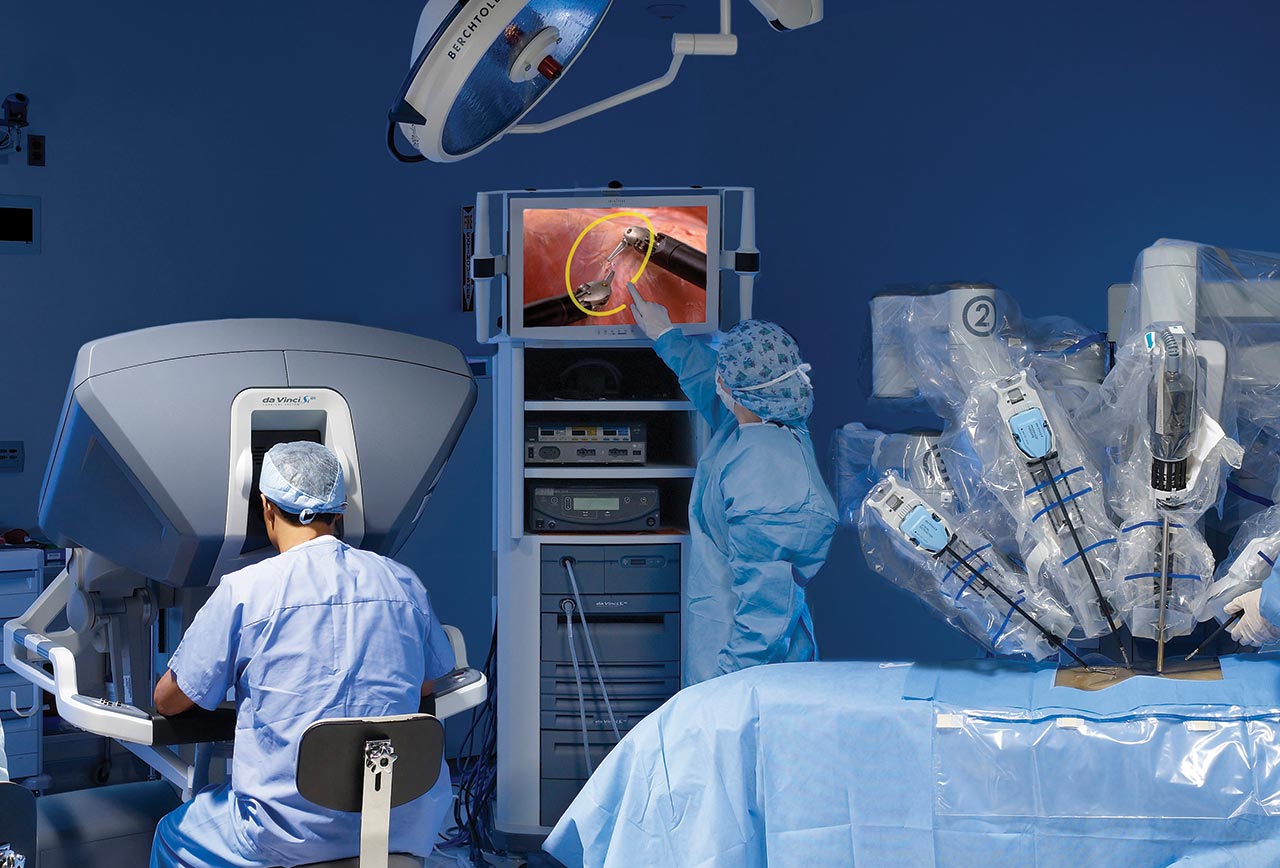The cancers regularly treated with surgery at the Cancer Center include:
- Breast
- Colon/rectal
- Lung
- Prostate
- Thyroid
- Kidney
- Bladder
- Cervical
- Endometrial
- Ovarian
- Skin
Types of Surgery
Our operating suites are equipped with advanced technology to help promote patient safety and comfort.
We offer a variety of different surgical techniques, to best meet each patient’s unique needs, including:
- Minimally Invasive Surgery: Diagnostic and surgical techniques such as fine needle aspirations (the use of a very thin needle to withdraw a small amount of tissue from a tumor); stereotactic biopsy (a computer-guided extraction of a tissue sample); and sentinel lymph node sampling (the removal of a single lymph node rather than multiple nodes).
- Plastic and Reconstructive Surgery: A full range of cosmetic and reconstructive procedures designed to restore a patient's appearance or the function of an organ or body part following the removal of a tumor.
- Robotic Surgery: Surgery for a variety of different cancers is performed by our experienced team of surgeons using the da Vinci® Surgical System, a robotic technology that provides patients with options for minimally invasive surgical procedures resulting in less pain, less scarring, shorter recovery time, faster return to normal daily activities, and in certain cases, better clinical outcomes.
- Videoscopic Techniques: These techniques include endoscopy and laparoscopy, which rely on the use of small fiberoptic cameras attached to thin, flexible tubes to generate images from inside the body onto a television monitor.

